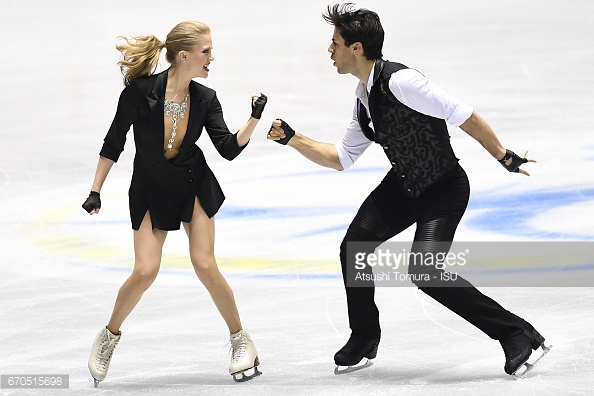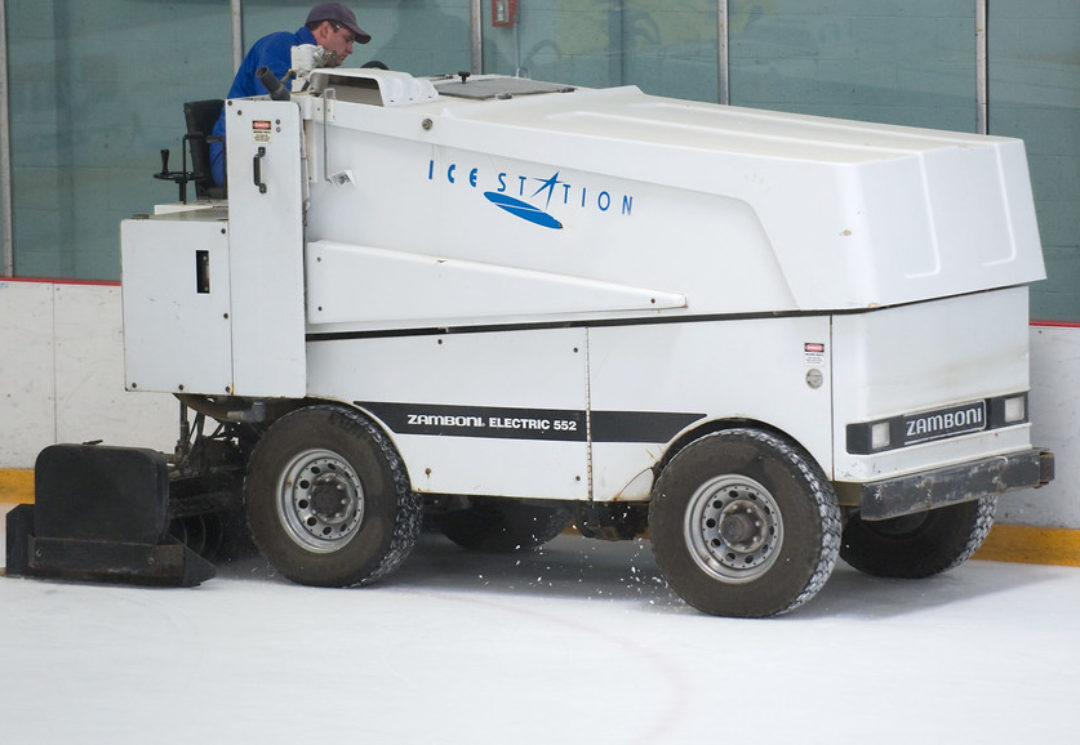
It’s crunch time in my line of work, so these year-end best-of lists are going to roll out slowly. I’m starting with ice dance for a simple reason: it’s the one I’m most terrified to post. Ice dance fans are territorial and passionate, and boy, will they fight with you. Sometimes they’ll fight with you even when they agree with you. And since my aesthetic preferences in ice dance diverge pretty far from the social media party line, I’m bracing myself for a whole lot of disagreement.
I don’t have specific criteria for what makes a performance great. The most important deciding factor is that, at the end of the season, I remembered how awesome it was. (Yes, there will be a list of performances that were memorable for all the wrong reasons – the season’s top 10 disasters are on their way.) High scores and medal wins are a plus, but not required, and some teams with extremely strong competitive records didn’t make my list this year. Teams also earned credit for innovation, commitment to their program themes, and expressing an emotion other than bland, generalized angst.
With no further ado, and in alphabetical order, here are ten ice dance performances that make me wish summer hadn’t come so soon.
Angelique Abachkina & Louis Thauron
Junior Grand Prix St. Gervais free dance
It’s not often that one of the best performances of the year happens in August. JGP St. Gervais was the first ISU competition of the season, and it transformed France’s Abachkina and Thauron from virtual unknowns to rising stars of junior ice dance. It turned out that they would never be as sharp or as fast as they were in their season debut, but wow, were they on point here, controlling their pace and synchronizing their movements while keeping up with their increasingly frenzied music. Stylistically, this is a tribute to Belbin and Agosto circa 2005, but Abachkina and Thauron put their own cheerful, modern spin on things. The choreography showed them in their best light, and it won them a surprise gold medal.
Christina Carreira & Anthony Ponomarenko
World Junior Championships free dance
At the beginning of the season, this free dance looked like a terrible idea: too mature for such a fresh-faced team, and set to music that’s both closely associated with other skaters and getting stale for skating fans. It took Carreira and Ponomarenko awhile to grow into the emotional highs and lows of their choreography, but it turned out to be the journey of a young team finding their stylistic voice. Ponomarenko, in particular, brought tremendous emotional range, drawing hopefulness and determination out of a piece that’s normally interpreted more somberly. They’ve always been technical prodigies, but at Junior Worlds, they moved seamlessly through tricky transitions and covered the ice in their lifts as few junior teams can. A bronze medal verified what had already become clear: Carreira and Ponomarenko are done waiting their turn. They’re ready to be the top American juniors – and soon to become one of the top American teams, period.
Madison Chock & Evan Bates
US National Championships free dance
For as long as they’ve skated together, Chock and Bates have been a team in search of a defining, signature program. They went outside their comfort zone for this season’s free dance and became one of the few top teams to reject the trend toward abstract, lyrical programs. The result was an exquisite artistic triumph: the rare competitive routine that captures the intense emotions of elite sports. There’s something almost confessional about it. It’s also a tribute to two great rock icons, with Chock as the explosive Killer Queen and Bates as an aloof but soulful Thin White Duke. Chock and Bates only nailed the technical elements a few times this season, but at Nationals, they hit every mark, beating the Shibutanis in the free dance and nearly recapturing their title.
Piper Gilles & Paul Poirier
Skate Canada free dance
Even if Gilles and Poirier aren’t your cup of tea, you have to admit they’re one of the most courageous teams in contemporary ice dance. Criticize them for displaying too little sexual chemistry, and they’ll show up with a tango. Sure, the effect is more than a little bit Addams Family, but Morticia and Gomez are one of the great love stories of our time. In a season when many teams’ choreography is so generic that they could be skating to almost anything, you can tell with the sound off that this is a tango. Hell, I can tell with my glasses off. They reached their technical peak early in the season, snagging an underdog bronze in a stacked field at Skate Canada with the event’s speediest twizzles and steadiest lifts. They’re camp as a couple of drag queens on Latin night, but they have the skills to back it up.
Natalia Kaliszek & Maksym Spodyriev
Mentor Torun Cup free dance
No dance team looks like they’re having more fun on the ice than Kaliszek and Spodyriev. This season, they channeled that joy into a charming and clever Dirty Dancing free dance, full of tributes to the movie, from Kaliszek’s curly, blond-streaked bob to the ’50s ballroom hip swivels in their step sequences. At their higher-profile events, they looked tight and nervous, and small technical errors stood out in comparison with their perfectly synchronized competitors. But at the Mentor Torun Cup, on home ice and with a less daunting field, Kaliszek and Spodyriev relaxed and let loose. It’s still easy to see where they have room to grow, but their easy chemistry and light-footed style stand out when they’re in their comfort zone.
Yura Min & Alexander Gamelin
World Championships short dance
The option for a hip hop rhythm in the short dance gave a lot of teams license for experimentation, but few embraced the opportunity as wholeheartedly as South Korea’s Min and Gamelin. Skating the second half of their routine to a K-Pop hit, they reminded us that hip hop is a dance style with international reach and a multitude of variations. Even late in the season, when their mid-program costume change was no longer a surprise, it brought a gasp of delight. And while Min and Gamelin are not yet ready to contend with the teams at the very top, their qualification for the free dance in this season’s extremely tough Worlds field bodes well for their future. In addition to stealing the show as performers, they showed they can execute high-difficulty lifts and twizzles with finesse. If they can iron out citizenship in time for the 2018 Olympics, they’ll prove on the biggest stage possible that Korea is an emerging power not only in singles, but in dance.
Rachel Parsons & Michael Parsons
US National Championships free dance
The Parsons siblings went undefeated at the junior level this season, and I feel like I’m the only ice dance fan who’s not surprised. Last season, they nipped at the heels of their friendly rivals, Lorraine McNamara and Quinn Carpenter, and over the summer, they slipped ahead, developing an unmatched confidence and consistency in their hardest elements. Their ice coverage in their steps and control in their lifts would be impressive at the senior level. They’ve also overcome the artistic challenge of expressing chemistry as siblings in a sport that prioritizes romance, and they’ve done it with emotional honesty, showing a connection that anyone who’s close with a brother or sister can relate to. That’s probably why their free dance is one of the few in a lyrical style that spoke to me this season: by avoiding angsty cliches, it gave them opportunities to show real emotional range. They were never more engaging and warm than at Nationals. What looked like an effortless win was really a demonstration of strong training and poise under pressure.
Elliana Pogrebinsky & Alex Benoit
US National Championships short dance
If you don’t realize how much this is my favorite short dance choreography of the season, you must really be new here. Pogrebinsky and Benoit broke into seniors by taking risks and committing completely, and it brought them a surprise pewter medal and a moment of glory on NBC in their first top-level trip to Nationals. They’re definitely a young team with room to grow, especially in the cleanness of their extensions and unison, but their flexibility, timing, and sheer fearlessness hide their flaws. They also showed that choosing swing over hip hop wasn’t necessarily a safe or conservative choice, and that a sense of humor can add to the intensity of an emotional connection. In their case, it proved they’re no joke: it takes both maturity and talent to stay in character while executing such challenging technical content.
Tessa Virtue & Scott Moir
World Championships short dance
Are Virtue and Moir the greatest ice dancers of all time? I’m hesitant to hand over the crown, but they certainly blew away every rival in their return to competition this season. New coaches and a renewed sense of purpose have refreshed them, but they’re fundamentally the same team we’d last seen settling for silver at the Sochi Olympics: focused, muscular, and skating so close together it’s a miracle their blades don’t tangle. A few times during the season, the judges seemed to shrug off errors that fans swore they spotted, but Virtue and Moir’s short dance at Worlds was beyond debate. An energetic and puckish Prince medley made them play against type, but Virtue in particular seemed more at home in purple lace and cut-out leggings than in their more conventional free dance. Their side-by-side step sequence was so fast and precise, everyone else in the sport should be embarrassed, and the dramatic lift at the end was an impressively tough variation on a signature move. This is what a comeback should look like every time.
Kaitlyn Weaver & Andrew Poje
World Championships short dance
For most of the season, it seemed like Weaver and Poje had lost their mojo. It turned out they were saving their best for a stunning conclusion. Throughout the season, they tweaked and refined their short dance choreography, and they finally found the right formula in Helsinki. Michael Jackson is no more hip hop than Prince is, but Weaver and Poje brought the right stylistic elements, with angular transitional moves and deep knees. More than any other team that took the hip hop option, they recognized that they were adapting a genre of dance, rather than a musical style. Technically, this performance was all about Poje’s edges; it’s one of those ice dance routines where you miss all the important stuff if you keep your eyes on the lady. Weaver and Poje just missed the podium at Worlds, but this performance proved they’re still in the game – and still innovating.
Next on The Finer Sports: my season highlights from the other three disciplines, plus the 2016-17 disaster hall of shame.

Thank you so much for this fabulous list! There are others I would have included, and I don’t think I’ll ever get Chock and Bates no matter what they do, but I look forward to watching these all over again. And I haven’t yet seen C&B’s nationals performance – maybe this one will be the charm.
Alison
Glad you enjoyed it! The difficult thing about ice dance is, it’s so much a matter of taste. I think everyone has a team they appreciate in theory but just can’t get behind, even when they’re at their best – and a team they think are artistic geniuses even when their programs are in a rut.